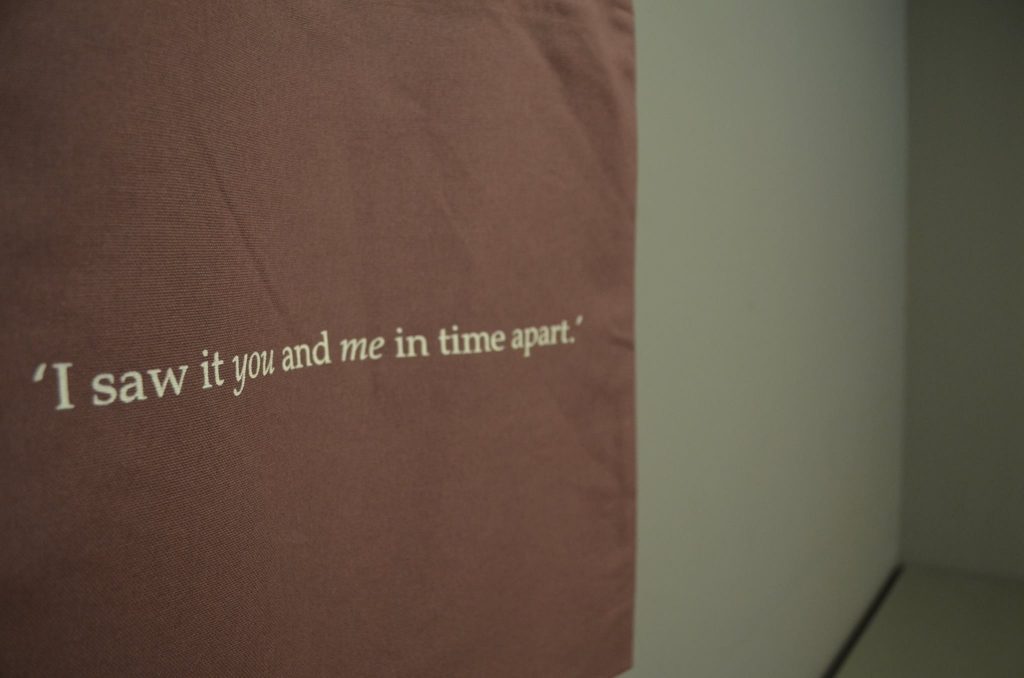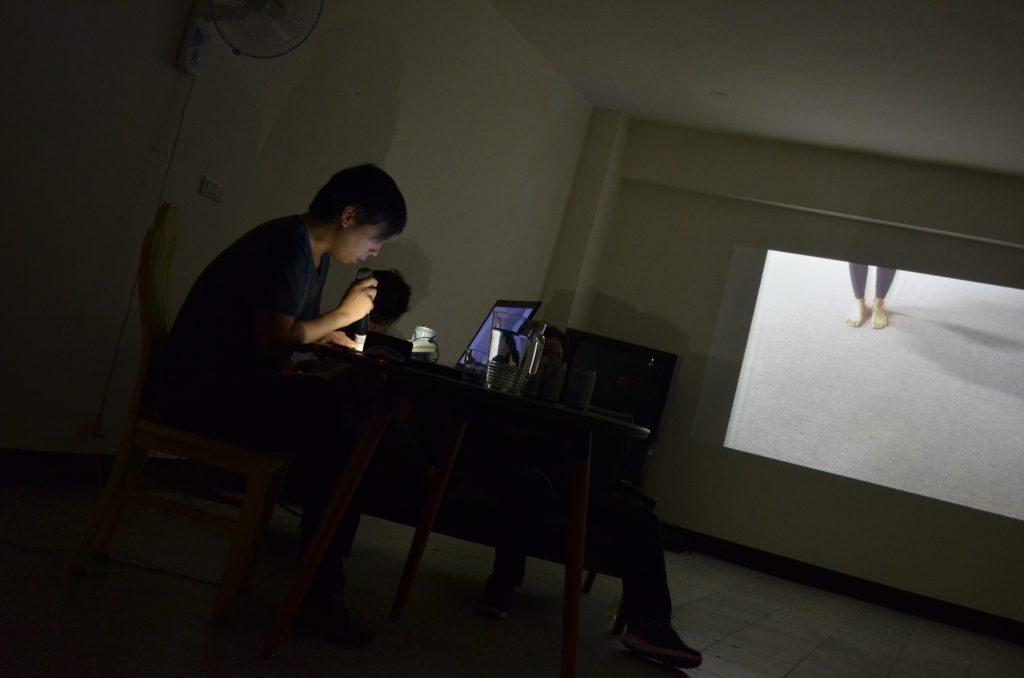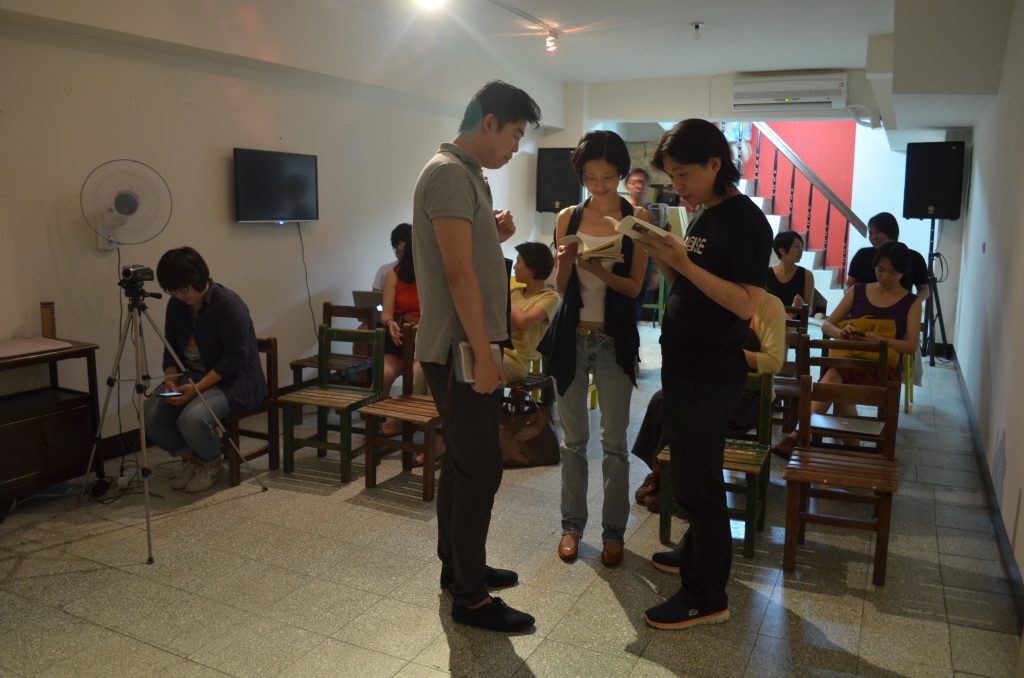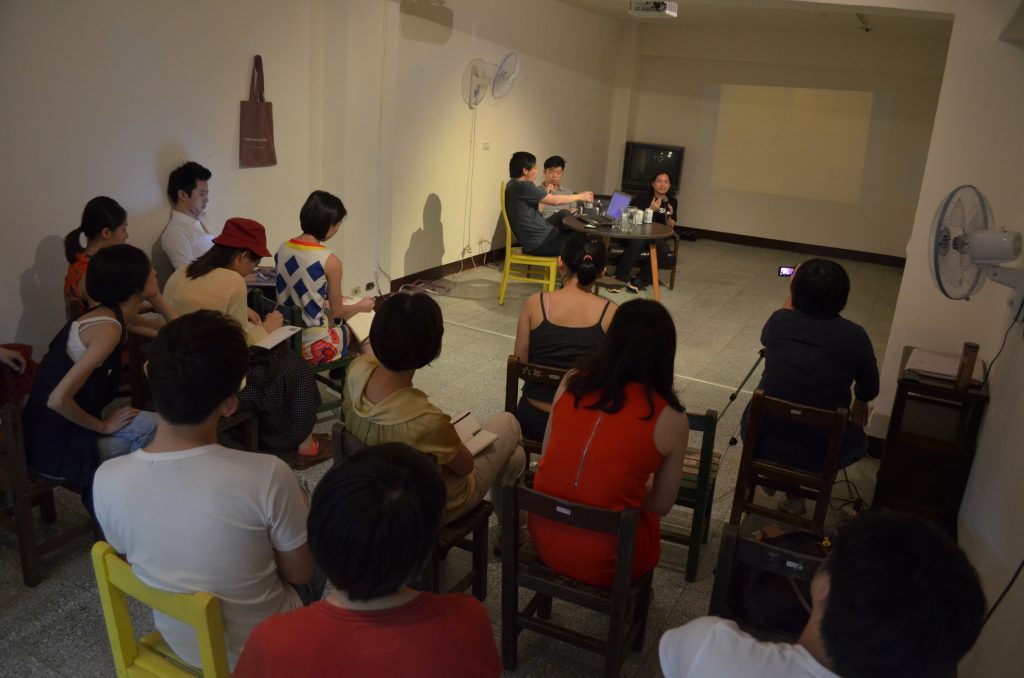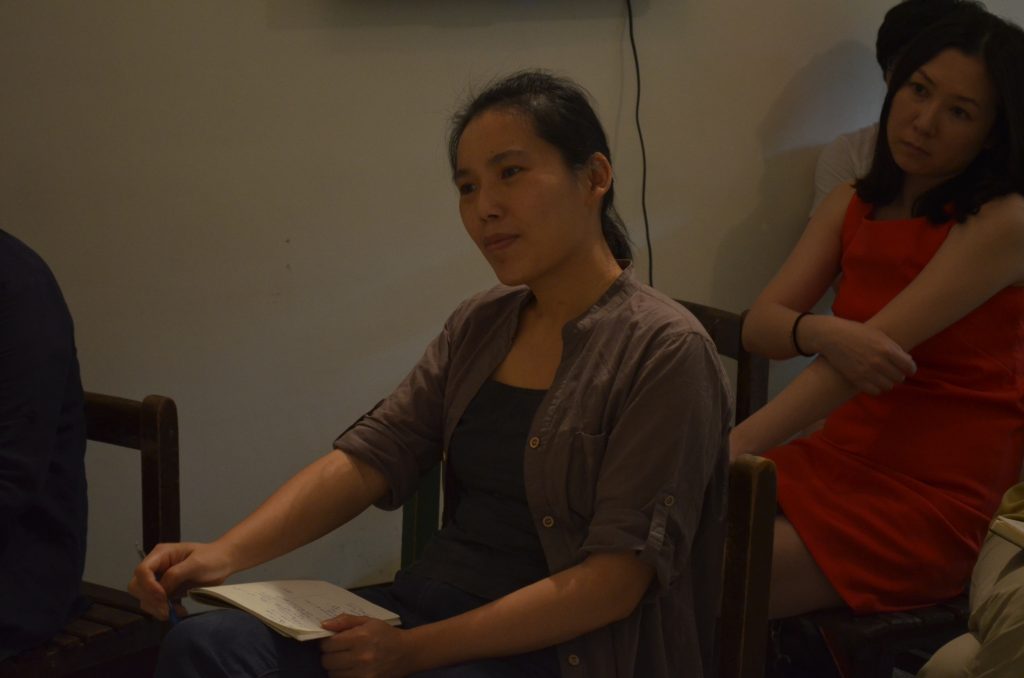2014.7.12. 3pm
The Burnning Issue Residency Programme: When (not) to let go – Lee Kit – Talk#4
關鍵議題駐村計劃:甚麼時候(不)放手 – 李傑 – 講座#4
(For English please scroll down)
(The speech is in Chinese. 演講以中文進行。)
有關個體裏的那個人
主持人|翁子健
與談人|王福瑞
與談人|王美玲
講座#4 文字記錄
文/張舒涵
有關個體裏的那個人,李傑在此虛構了「王美玲」角色,欲撇開藝術家身分影射李傑個人。一人飾二角的李傑,既是藝術家(李傑)也不是非藝術家(王美玲)。回歸創作者位置與王福瑞進行對話,並且邀請翁子健從宏觀的角度予以彙整,梳理整個駐村計畫以及創作歷程。
當王美玲(李傑)朗讀日記式手稿,近乎自我的剖白,實則提出對藝術定義的質疑。就王美玲(李傑)所拍的日常照片,是不是藝術?尤其,當相機的取得變得捶手可得,拍照成為最普通的小事,拍照還是藝術嗎?不論王美玲、李傑、王福瑞都企圖拉長並呈現某個剎那─感覺強烈的剎那,構築那份心理空間,轉化而外顯。彼此的差別僅在於媒材使用的不同,以及身分的不同。是藝術家、不是藝術家,通過藝術家身分的產出被稱做藝術,反之不然。相較創作者感性大於理性,翁子健透過對空間、聲音的分析連繫李傑和王福瑞兩人。
針對空間的處理,兩人皆掌握氣氛的營造、都具備即時性特徵,所謂現場感的重要。但是,王福瑞的空間需要有觀眾參與,方能達到對話的目的;李傑的展場空間則需要觀眾自發性地挖掘。對其而言,每個空間都是私密空間,需要時間獨自一人去感覺、思考、如何予以回應,空間中的活動都將成為作品的部分。毫無疑問,聲音在王福瑞手中是一種表達語言,亦兼具實驗性。相對李傑的對聲音這項媒材的使用,翁子健則戲稱其作品的現場呈現如同噩夢般不斷迴旋。以循環(loop)概念,嘗試去除音樂的邊界(音樂被時間框架著,有開始和結束兩個端點。藉循環播放,觀眾無論何時進入展場、無論花多少時間待著,卻永遠不知道音樂的開始和結束),一如對空間的想像綿長而無邊。
在最後一場談論中,焦點回到李傑自身,王福瑞像是對比。表演絕對是動態呈現,卻又不是說李傑的作品絕對安靜無聲,而是在表達上,流動於觀眾與作品之間是絕對內在的、抽象的、屬於心理空間的想像。亦即存在於個體中的個人部分。誠如翁子健所說,難以討論卻以不同層面在此詳加論之。
主辦單位:台北當代藝術中心
專案主持人:鄭美雅
專案經理:彭若瑩
專案團隊:蘇珀琪、方彥翔、余政達、許鋒瑞、陳小雜、張
專案助理:賴瑋婷
本計畫由文化部所贊助
About that figure in the individuality
Moderator | YUNG Anthony
Speaker | WANG Fujui
Speaker | WANG Mei Ling
Talk#4 Highlights
Text/Tiffany
Anthony Yung moderated a discussion between Wang Fujui and Wang Mei Ling (impersonated by Leekit) about that figure in individuality. Through the two very different artistic styles Anthony Yung tries to grasp the idea of what defines individuality and the underlying meanings. In addition he questions the role of the process and it’s relation to the final artwork.
Lee kit started by presenting himself as Wang Mei Ling, a commonly used name to convey himself as an average Joe. Giving a short speech on the dark side of reality, he said that people don’t underestimate him but instead they just don’t see him. He doubts himself, questions what he was done wrong and apologizes on how he just wasn’t good enough. Lee Kit choose to start this talk as an average Joe to show the frustrations that pounder in everyone’s minds but are seldomly discussed. Lee Kit is interested in those moments where people pounder, like the moments when you stare at something for too long and it becomes surreal; he captures these moments to create moments to remember. Lee Kit believes that people don’t always need to be looking for a meaning or focus point for his works. It is often just a feeling, a moment that each and every person experiences, but interprets differently. Quoting Lee Kit “[you] see, look, [then] you are contemplating” that how he sees his works being evaluated and experienced. He sees the process of creation just as important as the final product, because for him the process of creating is finding these moments and the final product is the creation of these moments. For him there is always a calling or an internal drive, which guides him to what the necessities are for his creations. This calling or internal drives always comes don’t to himself as an individual and his experiences.
Wang Fujui on the other hand see things under a very different light as a sound artist. He creates sounds that bring you to another time, transforming the space. He also makes sounds that can’t be heard but can be felt through the vibrations cause by the sound waves. He uses different sounds that create a dialogue between the viewers and this installation. To him his piece are a feeling, feeling of wanting to do something but doesn’t know what to do. They are often conscious acts of spontaneity. To him individuality is the origin of his sounds, the sounds that he makes are from him as an individual. He creates different sounds that are site-specific for the people and the environment around him. Similar to Lee Kit, Wang presents different moments through his sound performances/projects. Wang’s process is for his works are much more spontaneous yet intentional. However the final product is far most important since that is the production and the moment that he wants his views experience as he experiences it himself.
Anthony concludes that it takes times for viewers to understand that the experience of art is not just simply looking at pieces of works but experiencing the moments that are created by the artist. To truly understand Lee Kit and Wang’s art we must first stop trying to find a meaning and just immerse yourself into their works, because it is about the experience and what you take away from the experiences as an individual. Their works is different to each and every individual because of their personal experience of their works.
Project director: Meiya CHENG
Project manager: Jo Ying Peng
Executive Team: Frankie SU, Yen-Hsiang FANG, YU Cheng-Ta, Fong-Ray Hsu, Chen Hsiautsa, Shu Han Chang
Project assistant: Tiffany Lay
The programme is sponsored by the MINISTRY OF CULTURE

